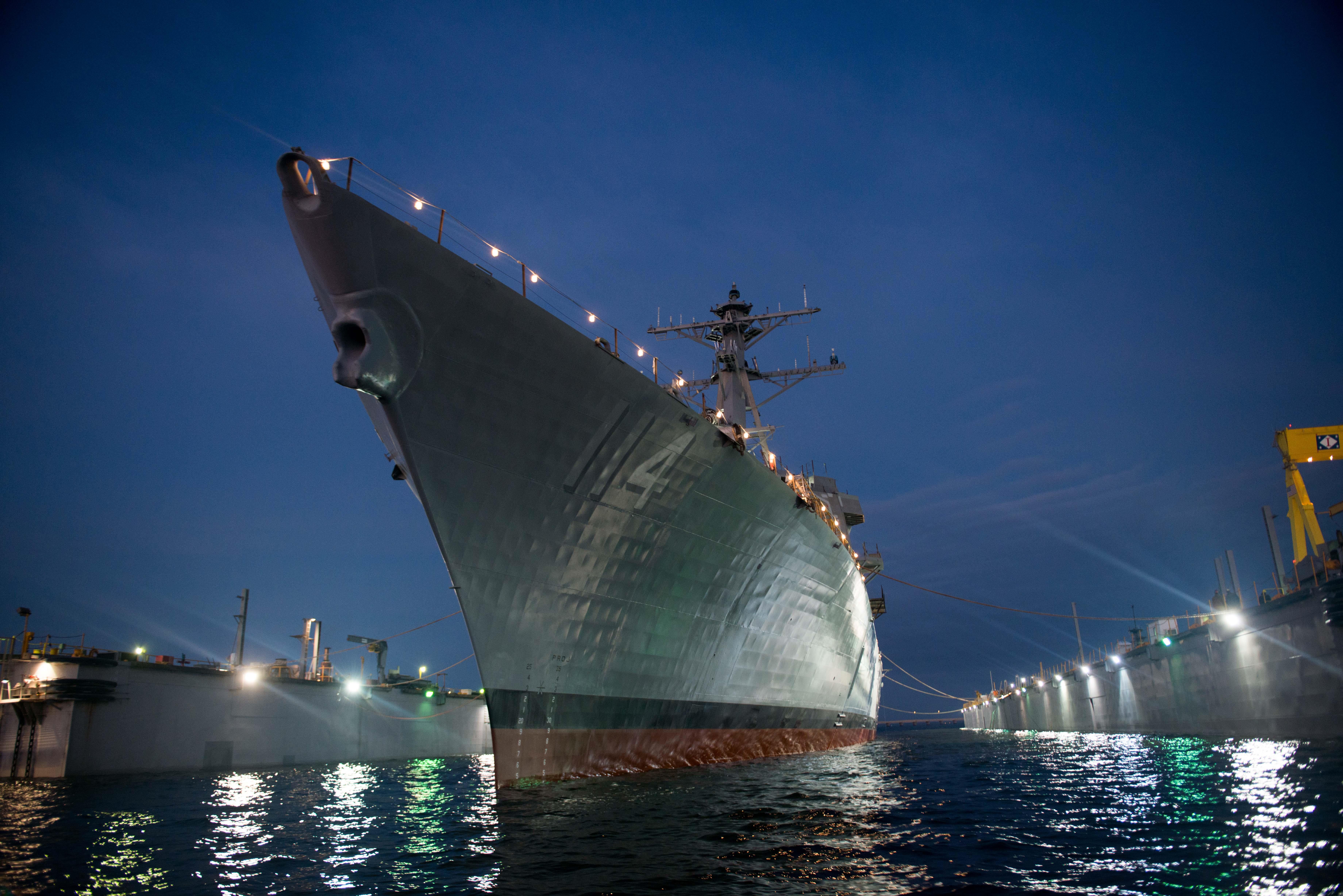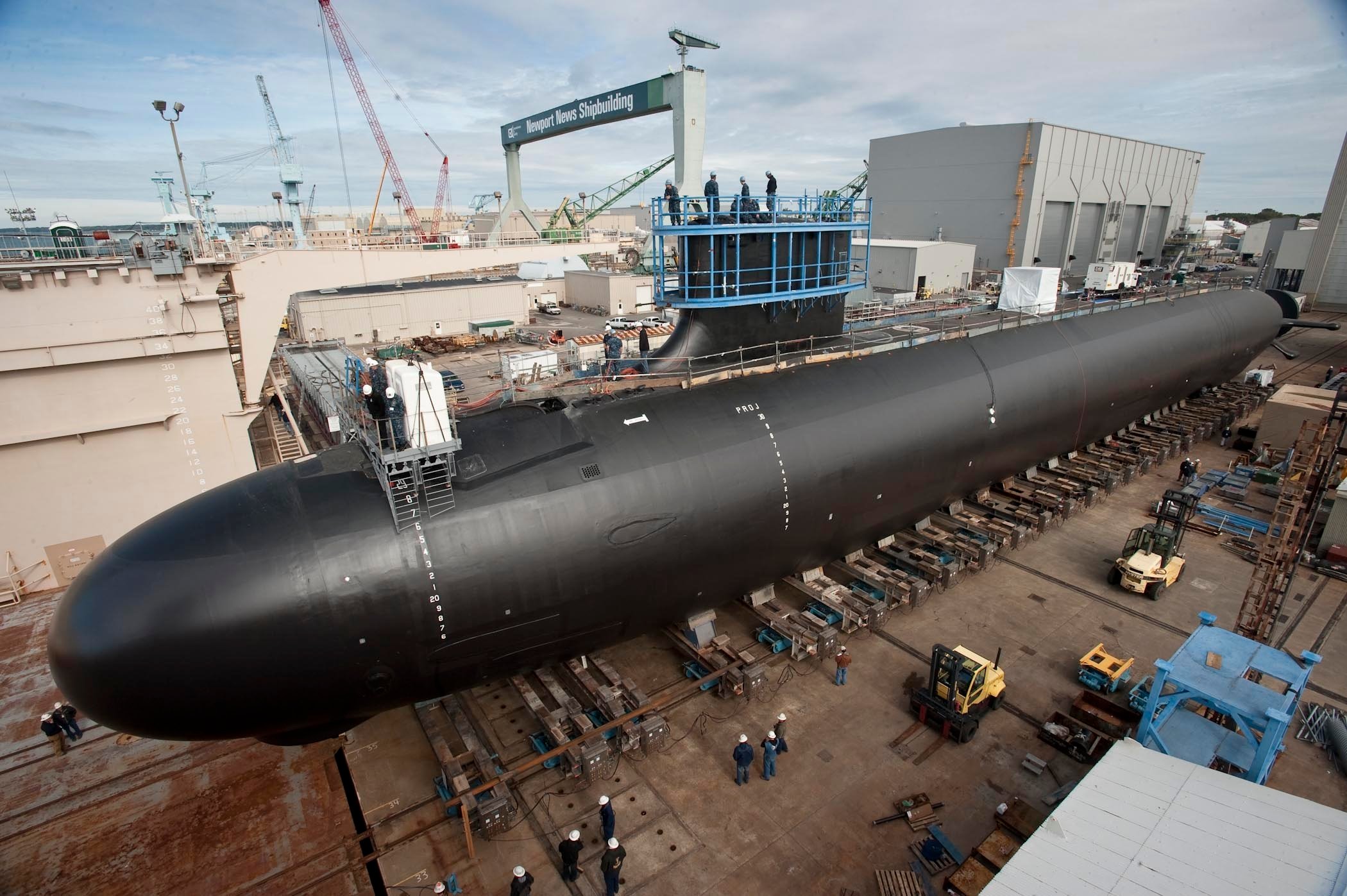
An ongoing force structure assessment and the goals of the next presidential administration will likely give the service’s latest long-range shipbuilding plan an unusually short shelf life.
A draft of the so-called 30-year shipbuilding plan, finalized by the Navy on Friday and obtained by USNI News on Monday, holds firm to the Navy’s goal of reaching a 308-ship navy over the next five years. But that battle force total is likely to increase, Bryan Clark, naval analyst Center for Strategic and Budgetary Assessments (CSBA) and former special assistant to past Chief of Naval Operations Adm. Jonathan Greenert, told USNI News on Monday.
The new plan is “very provisional until the Navy comes up with a new set of force structure requirements. And you have Congress that’s already weighing in with additional ships they want to build, and the new administration is going to obviously have things they want to do differently,” Clark said.
“Regardless of which administration comes in, they’re both going to want to grow the size of the Navy.”
The service last conducted its last look at its force structure assessment in Fiscal Year 2014, determining the total number of ships it needed was 308. The Navy is set to reach 308 ships in FY 2021, the last year of the proposed FY 2017 Future Year Defense Plan (FYDP).
However, since 2014 the potential threat outlook for the service has changed.
“The strategic landscape has changed sufficiently that we have to constantly reassess,” CNO Adm. John Richardson said in February.
“Last time we did that (FSA) we really didn’t have to account for a resurgent Russia, we really didn’t have to account for (the Islamic State), so we’re starting again.”
In particular, the service’s requirement for attack submarines will likely go well beyond the 48 requirement in the 2014 FSA.
“It’s also been pretty well known that even with that 48 (submarine) requirement we’re going to dip below that as the Los Angeles-class submarines come out of the inventory faster than the Virginia-class is coming in. And so managing our way through that trough, if you will, has been a topic that we’ve been watching closely and doing everything we can to mitigate that,” Richardson said in February.
Clark pointed out the draft shipbuilding plan didn’t address the attack boat totals.

“The Navy hasn’t done anything with the submarines requirement [in the plan]. It just tells you that the requirements are all outdated and need to be updated to reflect what the combatant commander need is in the future,” Clark said.
Additionally, the Navy’s draft didn’t include any changes to its large surface combatant numbers – its guided missile cruisers and destroyers.
Last year, USNI News reported the service had started examining increasing totals for its larger surface combatants due primarily to the rapid expansion and sophistication of China and Russia’s guided missile arsenal.
The Navy has explored expanding the requirement of 88 CRUDES ships to allow enough hulls to conduct the service’s ballistic missile defense missions as well as protect carrier strike groups (CSG). USNI News understands the new requirement for Large Surface Combatants could be more than a hundred ships.
The service did stick to its requirement for 52 small surface combatants, planned to be filled by the Littoral Combat Ship and the follow-on frigate design, despite the December mandate from Secretary of Defense Ash Carter for the Navy to truncate the LCS and frigate classes to 40 ships. The service did not discuss how it intended to make up the 12 ship difference in the plan between the requirement and the planned buy of LCS and frigate hulls.





